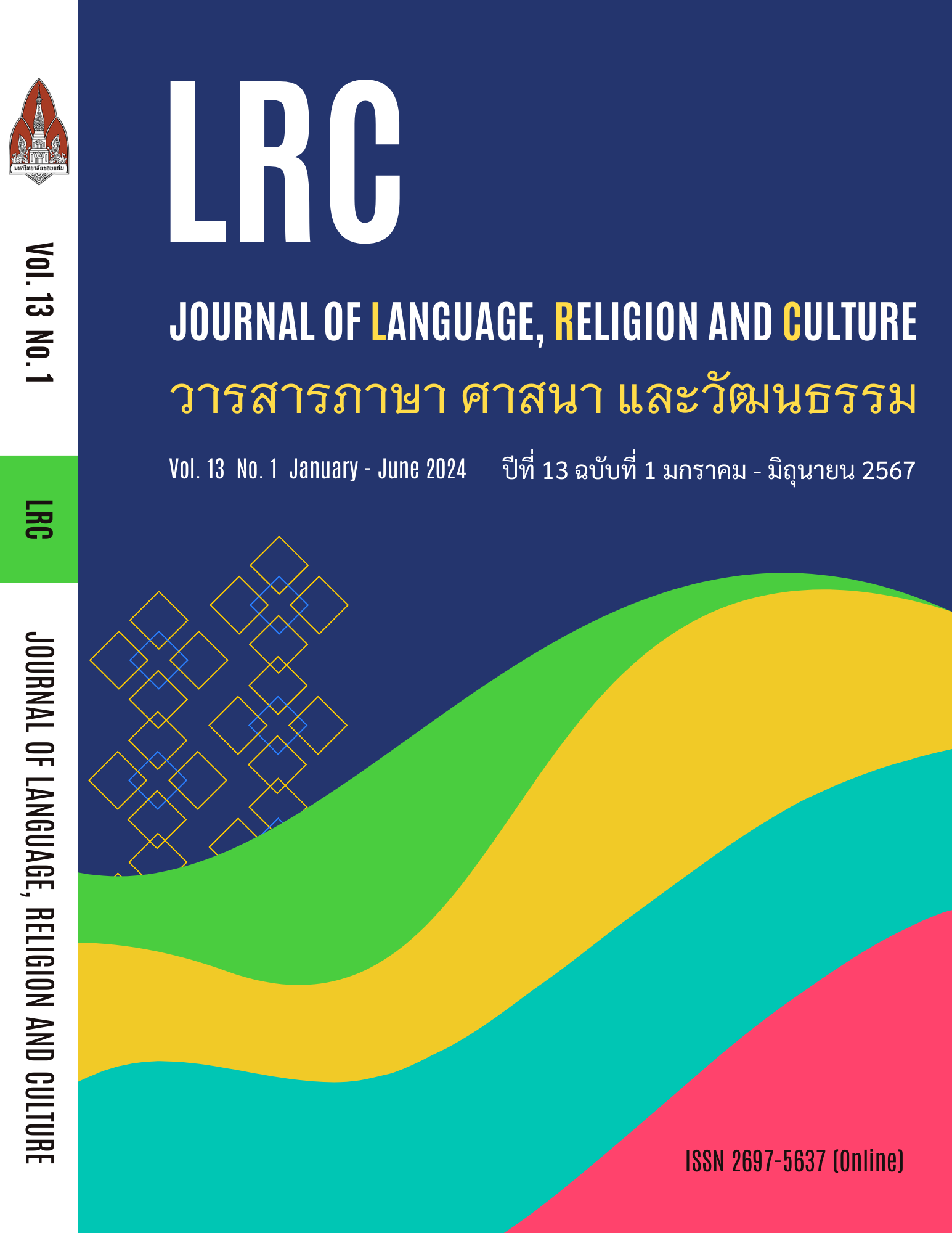article Animal Image and the Interpretation of Buddha’s Footprints
ภาพสัตว์กับการสื่อความหมายในรอยพระพุทธบาท
Keywords:
animal images, interpretation, Buddha's footprintsAbstract
This article aims to present images of animals that convey meaning from the 108 auspicious images in the Buddha's footprint described in Buddhist scriptures, including Jinalangkaratika scriptures SumangalaVilasini Scriptures Pajjamadhu scripture Auspicious Buddhist scriptures The Buddhapadalakkhaṇa and the Pathomsombodhikatha scriptures Using the concept of animal studies (animal studies) of Peter Singer (Peter Singer) and Tom Regan (Tom Regan) which views that “all animals are equal” (All animals are equal) in line with the Buddhist concept of All beings in this world are companions of birth, old age, sickness, and death. Images of animals convey meanings that emphasize 3 main aspects of animality: valuing animality; Equality of animals with humans and respect for animal images in the Buddha's footprint. These issues reflect the relationship between humans and nature. It is based on the concept of equal equality between humans and animals.
References
Chalermwut Wichit. (2015). “Animals and Ethical Actions in Theravada Buddhism” in Earth, Water, Wind, Fire, Elements, Universe, Poison from a Humanities Perspective. (2015) Chaturi Tingsapat, Suradet Chotiudomphan and Alisa Santasombat (editors) Bangkok: Siam Review. 167-202. [in Thai].
Fine Arts Department. (1997). 108 Mangala in the Buddha's Footprint (Atthakatha Buddhapadalakkhaṇa). His Majesty graciously graciously The royal print was given at the royal cremation ceremony of Phra Debvajaradhammabhorn (Suraphong Thanvaro), P.Dh., at the Royal Crematorium in front of the Phlapphla Issariyabhorn. Wat Debsirindravas. Bangkok: Office of the Royal Secretariat, pp. 73-74. [in Thai].
Fine Arts Department. (2016). Analysis of the characteristics and meaning of the Buddha's footprint in the National Museum, Bangkok. 1st edition. Bangkok: Hengsak Mankong Company Limited. [in Thai].
PhraBuddhagosacaraya. (1965). Sumangalavilasinii translation, volume 1. Bangkok: Abhidhamma Mahadhat Vidayalaya Foundation. Phra Bhuddharakkhitacaraya. (2005). Translation of the Jinalangkaratika petition. 1st printing. Bangkok: Vinnana Printing House. [in Thai].
PhraPoranacaraya and Phra BuddhapiyaThera. (1998). Namakkãrapatha-Pajjamdhu Pali/translation. 1st printing. Memorial of the royal cremation ceremony of Phra PitakaKosala (Pun Ariyapannathera) at Wat Saket crematorium on 16 May 1998. Bangkok. : Mahachulalongkornrajavidyalaya University Printing House. [in Thai].
Thailand - Burma: Because our lands are next to each other. (2018). 108 Mangala symbols on the Buddha's footprint. Retrieved 24 September 2022, from https://www.facebook.com/thailand.and.
myanmar/posts/872049152985028/. [in Thai].
Thanya Sangkhaphanthanon. (2016). Not just a beast: Animal studies from the perspective of ecocriticism. In the documents of the academic seminar in the Art Criticism Network Research Project: Research and Development (TRF). Sirindhorn Anthropology Center. Bangkok: Thailand Research Fund. [in Thai].
Anchalee Pinrod. (1982). The Buddhapadamongala scriptures: examination and analytical study. Master of Arts Thesis Chulalongkorn University.
Regan, Tom. (1985). “The Case for Animal Rights” in In Defence of Animals, ed Peter Singer. pp 13- 26. Oxford: Blackwell Publisher.
Downloads
Published
How to Cite
Issue
Section
License
Copyright (c) 2024 JOURNAL OF LANGUAGE, RELIGION AND CULTURE

This work is licensed under a Creative Commons Attribution-NonCommercial-NoDerivatives 4.0 International License.







